34ª edizione - 2010
BEATRICE LASCARIS di TENDA
(1372/1418)
Beatrice Balbo Lascaris,
meglio conosciuta come Beatrice di Tenda, nasce nel 1372 da Pietro Balbo
Lascaris conte di Ventimiglia e signore di Tenda.
Visse la sua gioventù nel
castello paterno di Tenda, dove in quegl’anni, circolavano mercenari e
numerose truppe di soldati, a difesa dei territori liguri dagli attacchi
angioini, tra cui quella del condottiero Bonifacio Cane, detto Facino
“il Terribile”, che appena vide Beatrice, se ne innamorò, tanto che
decise di rapirla portandola con se nelle sue imprese.
Il 2 Settembre 1403, Facino e Beatrice si sposarono a Tenda. Beatrice
partecipò attivamente alle conquiste del marito, dimostrandosi molto
battagliera. Durante il matrimonio con Cane, seppe anche rivestire il
ruolo di sua saggia consigliera per la conquista del ducato di Milano.
Nel 1412 improvvisamente Facino Cane si ammalò di Gotta e il 16 maggio,
dopo pochi giorni di sofferenza, morì. Beatrice, ormai quarantenne, si
risposò con Filippo Maria Visconti duca di Milano, più giovane di lei di
20 anni. Era il 24 luglio 1412, quando nella chiesa d’Abbiategrasso, si
celebrò l’unione, ma non fu un matrimonio d’amore, solo d’interesse da
parte del duca, che da quel momento entrò in possesso delle risorse,
delle terre e dell’esercito, ereditate da Beatrice dal defunto marito,
potendo così imporre i suoi diritti sul Ducato di Milano, restaurando il
dominio visconteo.
Dopo qualche anno di matrimonio, il duca diventò insofferente verso la
moglie, ritenendola troppo interessata alle sue questioni politiche.
Inoltre l’eccessiva differenza d’età, iniziò a pesare sul giovane
Filippo, che s’innamorò di una nobildonna milanese, dama di compagnia di
Beatrice, tale Agnese del Maino, con la quale, cercò un pretesto per
liberarsi della consorte.
Per mezzo di una menzogna, raccontata da due damigelle chiacchierone,
Filippo Maria, accusò Beatrice di averlo tradito con il musico di
palazzo, Michele Orombelli.
Era il 23 Agosto 1418, quando il Duca, senza verificare ulteriormente,
ordinò che la Duchessa venisse arresta con l’accusa d’adulterio e
rinchiusa nelle prigioni del Castello di Binasco. Nonostante le numerose
e brutali torture che le furono inflitte, non ammise mai l’infedeltà,
giurando ripetutamente d’essere innocente; a tradirla fu il musicista,
che con la promessa da parte del Duca di aver salva la vita, confessò il
falso, condannando a morte la povera Beatrice.
A Ventimiglia, appena si venne a sapere dell’ingiusta carcerazione di
Beatrice, si cerco di sollevare una protesta armata contro il Duca, da
tempo non ben visto nei nostri territori, da parte di Giovanni Bordino e
Badino Novello, che fu però immediatamente respinta dal podestà Battista
di Savignone.
Riconosciuta ingiustamente colpevole, la sera del 13 Settembre 1418,
nella piazza del Castello di Binasco, Beatrice fu decapitata, ma non
prima di vedere morire le due bugiarde damigelle, uccise per evitare che
in seguito potessero rivelare la verità, e il codardo Michele, che
nonostante la promessa del Duca, fu giustiziato.
Béatrice Lascaris, fille de Pierre Balbo Lascaris, comte de Vintimille et seigneur de Tende, naît en 1372. Elle passe sa jeunesse à Tende, au château de son père, où, à l’époque, nombreux sont les mercenaires et les soldats placés à défendre les territoires liguriens des attaques angevins. Parmi eux est le condottiere Bonifacio Cane, dit Facino « le Terrible », qui s’éprend de Béatrice, décide de l’enlever et l’emmener avec soi.
En 2 septembre 1403, Facino et Béatrice se marient. Béatrice, très combative, participe activement aux conquêtes de son mari et revêt un rôle de sage conseilleur à la conquête du duché de Milan En 1412, Facino Cane tombe malade et meurt le 16 mai, après quelques jours de souffrance.
Béatrice, qui a désormais quarante ans, se remarie avec le duc de Milan, Philippe Marie Visconti, plus jeune qu’elle de vingt ans. Le mariage, célébré le 24 juillet 1412, dans l’église de Abiategrasso, n’est pas un mariage d’amour, mais seulement d’intérêt, au moins de la part du duc, qui, dès ce moment, entre en possession de tous les biens, les terres et l’armée, que Béatrice a hérités de son mari et peut imposer ses droits sur le duché de Milan, où, aussitôt, il restaure la domination des Visconti. Après quelques années de mariage, le duc ne supporte plus sa femme, qu’il juge trop intéressée à ses affaires politiques. De plus, la grande différence d’âge commence à peser sur le jeune Philippe, qui s’éprend de la noble milanaise Agnès del Maino, dame de compagnie de Béatrice, et cherche un prétexte pour se débarrasser de sa femme. Profitant d’un mensonge, raconté par deux dames bavardes, Philippe Marie accuse Béatrice de l’avoir trahi avec le musicien de cour, Michel Orombelli.
C’est le 23 août 1418 lorsque le duc, sans aucune ultérieure enquête, accuse la duchesse d’adultère, la fait arrêter et renfermer dans les prisons de Binasco. Béatrice, quoique brutalement torturée, continue à se déclarer innocente, mais le musicien, à qui le duc a promis d’avoir la vie sauve, jure le faux et décide ainsi de la mort de la duchesse.
A Vintimille, Giovanni Bordino e Badino Novello, dès qu’ils apprennent l’injuste emprisonnement de Béatrice, cherchent à soulever une protestation armée contre le duc, assez mal vu de tous les habitants de notre ville, mais le podestat Baptiste Savignone rejette immédiatement leur décision.
Le soir du 17 septembre 1418, après avoir vu mourir les deux dames menteuses, tuées pour éviter qu’elle puissent révéler la vérité et Michel, le lâche musicien, exécuté, malgré les promesses du duc, Béatrice, reconnue injustement coupable, est décapitée sur la place du Château de Binasco.
Beatrice Balbo Lascaris, better known as Beatrice of Tenda, was born in 1372; she was the daughter of Pietro Balbo Lascaris Count of Ventimiglia and Lord of Tenda.
During her youth she lived in her father’s castle, in Tenda, where, in those days, mercenaries and troops of soldiers were to defend the Ligurian territories from the Angevin attacks. Among them there was the "condottiere" Bonifacio Cane, named Facino "the terrible", who, soon, fell in love with Beatrice, whom he abducted and brought with him in his feats.
In 2nd September1403, Facino and Beatrice got married. Beatrice was very pugnacious and participated in many feats of arms of her husband. During her life with Bonifacio Cane, she was also a good counsellor in the conquest of the dukedom of Milan. In 1412, Facino Cane, who was suffering from gout, suddenly fell seriously ill and on May 16th he died. Beatrice, at the age of 40 years, married Filippo Maria Visconti, Duke of Milan, younger than her of 20 years. Their weeding was celebrated in the church of Abbiategrasso on the 24th of July 1412. It was not a love-match, but only a question of interest for Filippo Visconti, who, entering into possession of the wealth, the lands and the army, Beatrice had inherited from her first husband, could impose his rights on the dukedom of Milan and restore the Visconti rule.
But after some years of marriage, the Duke, thinking her wife too much interested in his political matters, became intolerant of her. Besides, the difference of age began to weigh on the young Filippo, who, in love with a Milanese noblewoman, a lady companion of Beatrice, Agnese del Maino, tried with her to find a pretext to get rid of his wife. The pretext was a lie, told by two maids of honour and Filippo Maria accused Beatrice of adultery with the musician Michele Orombello.
In 1418, on August 23rd , the Duke, without any further inquiries, ordered to arrest the Duchess, charging her with adultery and confined her in the prison of the Castle of Binasco. In spite of the cruel tortures, she never admitted her unfaithfulness and repeatedly swore to be innocent. He, who betrayed her, was the musician. He believed in the false promise of the Duke and hoping to spare his life he committed perjury and condemned to death the poor Beatrice.
In Ventimiglia, as soon as they heard about the imprisonment of Beatrice, Giovanni Bordino and Badino Novello tried to raise an armed protest against the Duke, who was very unpopular in our territories, but the protest was immediately stopped by the podestà Battista of Savignone.
Beatrice was unjustly found guilty and in the evening of September 13th 1418, in the Castle Square of Binasco, she was beheaded, after the death of the two ladies, killed to avoid they could reveal the truth and that of the cowardly Michele, who in spite of the promise of the Duke, was executed.
Beatrice Balbo Lascaris, besser bekannt als Beatrice von Tenda, wurde 1372 als Tochter von Pietro Balbo Lascaris, Graf von Ventimiglia und Herrscher von Tenda, geboren.
Ihre Jugend verlebte sie auf der väterlichen Burg in Tenda. Um die ligurischen Gebiete gegen Angriffe der Anjou zu verteidigen,durchstreiften während dieser Zeit Söldner und Soldatentruppen die Gegend. Unter ihnen befand sich der Heerführer Bonifacio Cane, genannt „Facino der Schreckliche". Beim Anblick von Beatrice verliebte er sich augenblicklich, entschied sie zu ent führen und sie auf seine Unternehmungen zu verbringen.
Am 2. September 1403 vermählten sich Facino und Beatrice.
Beatrice zeigte sich kämpferisch und nahm aktiv Anteil an den Eroberungen ihres Gemahls. Während der Ehe mit Cane erfüllte sie auch die Rolle als weise Ratgeberin, als es um die Einnahme des Hezogtums Mailand ging.
1412 erkrankte Facino Cane unvermittelt an Gicht. Nach wenigen Tagen Leidens starb er am 16. Mai. Beatrice, nun in den Vierzigern, verheiratete sich erneut - mit dem zwanzig Jahre jüngeren Filippo Maria Visconti, Herzog von Mailand. Die Vereinigung wurde am 24.Juli 1412 in der Kirche von Abbiategrasso geschlossen. Es wurde gefeiert obwohl es keine Liebesheirat war, sondern auf Interesse des Herzogs beruhte, der durch die Heirat Zugriff auf den von Beatrice ererbten Besitz, die Ländereien und das Heer bekam. So konnte der Herzog seine Rechte und die Vorherrschaft der VISCONTI auf das Herzogtum Mailand durchsetzen. Nach einigen Ehejahren wurde der Herzog seiner Frau gegenüber unduldsam, da sie sich zu sehr in seine politischen Angelegenheiten mischte. Hinzu begann ihn der große Altersunterschied zu stören.
Er verliebte sich in eine mailändische Edelfrau: Agnese del Maino. Zusammen mit dieser Gesellschafterin von Beatrice suchte Filippo einen Vorwand, um seine Gattin loszuwerden.
Mit Hilfe einer Lüge, die von zwei schwatzhaften Edelfräulein verbreitet wurde, beschuldigte Herzog Filippo seine Frau ihn mit dem Palastmusiker Michele Orombelli betrogen zu haben.
Am 23. August 1418 ordnete der Herzog ohne weitere Nachforschungen die Verhaftung der Herzogin an. Mit der Anschuldigung Ehebruch begangen zu haben wurde Beatrice in das Gefängnis der Festung Binasco gesperrt. Trotz der zahlreichen und brutalen Foltern, die ihr zuteil wurden, gestand Beatrice nie ihre Untreue und schwor wiederholt unschuldig zu sein. Letztendlich wurde sie von dem Musiker verraten, der mit dem Versprechen des Herzogs sein Leben zu schonen, eine Falschaussage machte und so die arme Beatrice zum Tode verurteilte.
Sobald man in Ventimiglia von der ungerechten Verhaftung Beatrices hörte, erhob sich unter der Führung von Giovanni Bordino und Badino Novello ein bewaffnetes Heer gegen den Herzog, der zu jener Zeit in hiesigen Gebieten nicht gern gesehen war. Der Protest wurde jedoch unverzüglich vom Bürgermeister Battista di Savignone zurückgeschlagen.
Unschuldig schuldig gesprochen wurde Beatrice am Abend des 13. September 1418 auf dem Platz von der Festung Binasco geköpft. Vorher sah sie jedoch die schwatzhaften Edelfräulein sterben, ebenso wie den Feigling Michele, der trotz des Versprechens des Herzogs verurteilt wurde, um zu verhindern, daß die Wahrheit ans Licht kommen könnte.
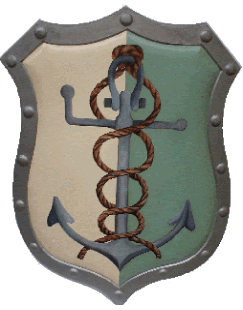 QUADRO 1 - (SESTIERE MARINA)
- PIAZZA ROCCHETTA
QUADRO 1 - (SESTIERE MARINA)
- PIAZZA ROCCHETTA
Beatrice Balbo Lascaris, nacque nel 1372. Figlia di Pietro Balbo Lascaris, conte di Ventimiglia e signore di Tenda, passò la sua gioventù nel castello del padre. In quel periodo, nella zona, circolavano mercenari e numerose truppe, a protezione dei territori da attacchi dei D’Angiò, tra cui quella di un famoso e valoroso condottiero, Facino Cane, detto il “terribile”. Egli, appena vide Beatrice, se ne innamorò a tal punto che, una notte, la rapì per portarla con se a Milano.
La fille de Pierre Balbo Lascaris, comte de Vintimille et seigneur de Tende, Béatrice Lascaris, naît en 1372 et passe sa jeunesse au château de son père. A l’époque, nombreux sont les mercenaires et les soldats, qui se trouvent aux alentours pour protéger le territoire des attaques angevins. Il y a, parmi eux, le fameux et vaillant condottiere Facino Cane, dit « le Terrible », lequel, dès qu’il voit Béatrice il s’éprend d’elle, à tel point, qu’une nuit il l’enlève et l’emmène avec lui à Milan.
Beatrice Balbo Lascaris was the daughter of Pietro Balbo Lascaris, Count of Ventimiglia and Lord of Tenda; she was born in 1372 and passed her youth in her father’s Castle. In that period, also mercenaries and troops of soldiers were there to protect the territories from the attacks of the Angevins. Among those, there was a famous and brave "condottiere", Facino Cane, named "the terrible", who, as soon as he saw Beatrice, fell in love with her and one night he abducted and took her to Milan, with him.
Beatrice Balbo Lascaris, geb.1372, Tochter des Pietro Balbo Lascaris, Graf von Ventimiglia, Herrscher von Tenda, verbringt ihre Jugend in der Burg ihres Vaters. Um die ligurischen Gebiete gegen Angriffe der Anjou zu verteidigen, durchstreiften während dieser Zeit Söldner und Soldatentruppen die Gegend. Unter ihnen befand sich ein berühmter und tapferer Heerführer: Facino Cane, genannt „Facino der Schreckliche".
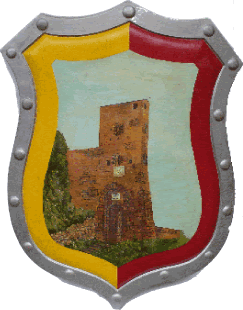 QUADRO 2 - (SESTIERE CIASSA)
- SALITA MONS. DAFFRA
QUADRO 2 - (SESTIERE CIASSA)
- SALITA MONS. DAFFRA
Il 2 Settembre 1403 a
Tenda, Facino Cane sposò Beatrice e la loro unione fu complice e felice.
Insieme condivisero le imprese di conquista, dove lei partecipò
attivamente nel ruolo di saggia consigliera. Facino ambiva ai territori
del ducato di Milano, mentre lei voleva diventare Duchessa.
Dopo anni di lotte e vittorie, Facino, nel maggio del 1412, si ammalò
gravemente di Gotta, malattia che non gli avrebbe lasciato nessuna
possibilità di guarigione, ed era consapevole che in breve tempo sarebbe
morto, lasciando sola l’amata moglie Beatrice.
En 2 septembre 1403, après l’avoir enlevée du château de son père, Facino Cane épouse Béatrice. C’est un mariage d’amour et leur union est heureuse. Ensemble ils prennent part aux conquêtes, où souvent Béatrice revêt un rôle important de sage conseilleur. Facino convoite le Duché de Milan et sa femme veut devenir Duchesse. Après des années de combats et victoires, Facino, le mois de mai 1412 tombe malade et la goutte, dont il est souffrant, ne lui laisse aucun espoir de guérison. Il sait de n’avoir plus longtemps à vivre et que Béatrice, sa femme bien aimée, restera seule.
In 2nd september 1403, Facino Cane, married Beatrice; their union was very happy. They lived in perfect harmony and she participated as a wise counsellor in the deeds of her husband. Facino wanted the Dukedom of Milan and Beatrice wished to become a Duchess.
After years of fights and victories, in May 1412, Facino seriously got sick of gout, an illness that won’t leave him any possibility of cure. He knew that in a short time he would die and leave alone his beloved wife Beatrice.
Am 2. September 1403 vermählten sich Facino Cane und Beatrice. Ihre Union war glücklich und komplizenhaft. Gemeinsam teilten sie die Eroberungsunternehmungen, an denen sie in der Rolle als weise Ratgeberin aktiv teilnahm . Facino begehrte die Gebiete des Herzogtums Mailand, während sie Herzogin werden wollte.
Nach Jahren erfüllt von Sieg und Niederlagen erkrankte Facino im Mai 1412 schwer an Gicht, eine Krankheit von der er sich nicht mehr erholte und nach kurzer Zeit verstarb. Seine geliebte Beatrice blieb allein zurück.
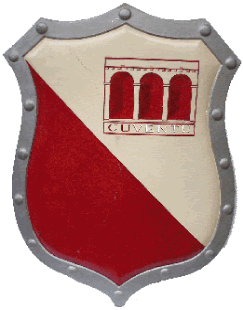 QUADRO 3 - (SESTIERE CUVENTU)
- PIAZZA SAN GIOVANNI
QUADRO 3 - (SESTIERE CUVENTU)
- PIAZZA SAN GIOVANNI
L’attacco di Gotta che colpì Facino fu molto forte, e a nulla servirono le cure. Il 16 maggio 1412, dopo pochi giorni di sofferenze, morì, lasciando sola e disperata la moglie. Dopo qualche tempo, il 24 luglio 1412, nella chiesa di Abbiategrasso, la quarantenne Beatrice si risposò in seconde nozze con il giovane Filippo Maria Visconti, duca di Milano, che vide nel matrimonio con la donna, la soluzione per risollevare il suo ducato, ormai da anni in difficoltà. Beatrice portò con se l’eredità del defunto marito: risorse economiche, terre e un esercito molto potente, pronto a giurare fedeltà a Filippo Maria. Non fu un matrimonio d’amore e ben presto Beatrice si accorse della differenza tra il nuovo marito e il perduto consorte.
Facino Cane est très grave et tous les soins pour le soulager sont inutiles. Le 16 mai 1412, après quelques jours de souffrance, il meurt, en laissant sa femme seule et désespérée. Quelques temps après, le 24 juillet 1412, dans l’église de Abbiategrasso, à quarante ans, Béatrice se remarie avec Philippe Marie Visconti, le duc de Milan, qui voit dans ce mariage un moyen pour solidifier son duché que depuis quelque temps est en difficulté. Béatrice porte, en effet, l’héritage du feu son mari : l’argent, les terres et une armée puissante et disposée à prêter serment de fidélité à Philippe. Ce n’est donc pas un mariage d’amour et Béatrice bientôt se rend compte de la différence entre ce nouveau mari et le feu son époux.
F
acino was seriously ill and every treatment was useless. On May 16th 1412, after days of suffering, he died, leaving his wife in despair. But two months later, on 24th July, in the church of Abbiategrasso, the 40 years old Beatrice married the young Filippo Maria Visconti, who saw in his marriage with Beatrice the end of all the problems that worried him about the future of his Dukedom. In fact Beatrice brought him the inheritance of her first husband: riches, lands and a powerful army, ready to swear allegiance to him. It wasn’t a love-match and well soon, Beatrice realized the difference between her new husband and her dear Facino.
Eine Gichtattacke befällt Facino. Keine Pflege hilft mehr. Nach wenigen Tagen Leidens verstirbt er am 16. Mai 1412 und hinterläßt seine Frau einsam und verzweifelt.
Nach einiger Zeit, am 24. Juli 1412 in der Kirche von Abbiategrasso, heiratet die vierzigjährige Beatrice zu zweiten Mal: den jungen Filippo Maria Visconti , Herzog von Mailand. Er sieht in der Heirat mit Beatrice die Möglichkeit sein Herzogtum zu retten, welches seit Jahren in Schwierigkeiten steckt.
Beatrice bringt das Erbe ihres verstorbenen Mannes in die Ehe: Vermögen, Ländereien und ein schlagkräftiges Heer, bereit Filippo Maria Treue zu schwören. Es war keine Liebesheirat und schnell bemerkte Beatrice den Unterschied zwischen ihrem neuen Ehemann und dem verlorenen Gefährten.
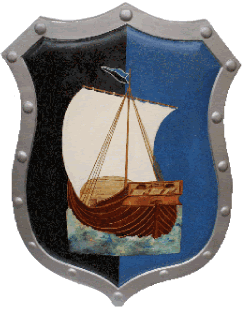 QUADRO 4 - (SESTIERE BURGU)
- PIAZZETTA DELLE ERBE
QUADRO 4 - (SESTIERE BURGU)
- PIAZZETTA DELLE ERBE
Con il passare degli anni, il Duca divenne sempre più insofferente alla moglie, secondo lui troppo interessata ai suoi affari politici, incapace di dargli un erede e comunque troppo vecchia per lui. Inoltre intrecciò una relazione con Agnese del Maino, nobildonna milanese e dama di compagnia di Beatrice, con la quale iniziò a pensare ad un modo per sbarazzarsi della donna. Qualsiasi pretesto, anche una bugia, sarebbero bastati al Duca, per sbarazzarsi per sempre dell’ormai “inutile” consorte, dimenticandosi che se aveva ripristinato il suo potere, era stato solo grazie a lei.
Avec les années le duc devient toujours plus intolérant à l’égard de sa femme, selon lui trop intéressée à ses affaires politiques, incapable de lui donner un héritier et, de toute façon, trop vieille pour lui. Il noue une liaison avec Agnès del Maino, noble milanaise et dame de compagnie de Béatrice, avec qui il commence à chercher un prétexte, n’importe lequel, pour pouvoir se débarrasser de sa femme. Même un mensonge suffira au duc pour se débarrasser de la désormais inutile épouse, en oubliant que, seulement grâce à elle, il avait pu rétablir son pouvoir.
After some years, the Duke became more and more intolerant of his wife; he thought she was too much interested in his political business, unable to give him a heir and, in any case, too old for him. Besides, he had a liaison with Agnese del Maino, a Milanese noblewoman, lady companion of Beatrice and with her help he began to find a pretext, an excuse, even a lie to get rid of his "useless" wife. Of course, Filippo was forgetting that, if had been able to restore his Dukedom, he had to thank his wife.
Die Jahre vergingen und der Herzog wurde seiner Frau gegenüber immer unduldsamer. Seiner Meinung nach war sie zu sehr an seinen politischen Angelegenheiten interessiert, unfähig ihm einen Nachfolger zu schenken und viel zu alt.
Außerdem begann er eine Beziehung zu Agnese del Maino, eine mailändische Edelfrau und Gesellschaftsdame von Beatrice. Mit ihr suchte er eine Möglichkeit Beatrice loszuwerden. Jeder Vorwand, auch eine Lüge würde dem Herzog reichen, um sich von der mittlerweile „unnützen" Gefährtin zu befreien. Er vergaß dabei, daß er nur durch sie zu seiner Macht gekommen war.
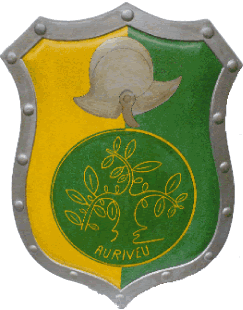 QUADRO 5 - (SESTIERE AURIVEU)
- VICO SAONESE
QUADRO 5 - (SESTIERE AURIVEU)
- VICO SAONESE
Finalmente per il Duca, il pretesto per liberarsi di Beatrice, arrivò. Due damigelle di corte, probabilmente spinte e incitate dall’amante, Agnese del Maino, raccontarono di aver visto Beatrice nelle sue stanze, in compagnia del musico di palazzo, Michele Orombelli, in atteggiamenti intimi. Questa chiacchiera senza fondamento, bastò al Duca per accusare la moglie d’adulterio. Era il 23 Agosto 1418, quando Beatrice fu arrestata e condotta nelle prigioni del Castello di Binasco in attesa della sentenza. Fu torturata brutalmente per essere indotta a confessare un tradimento che in realtà non c’era stato. Neanche la sofferenza la piegò e continuò a proclamare la sua innocenza.
Philippe a enfin un prétexte pour se débarrasser de sa femme. Deux dames de cour, que probablement la maîtresse du duc, Agnès del Maino a réussi à convaincre, racontent d’avoir vu Béatrice, dans ses appartements, en intimité avec le musicien de cour, Michel Orombelli. Ce faux bavardage suffit au duc pour accuser sa femme d’adultère. Le 23 août Béatrice est arrêtée et, dans l’attente de jugement, renfermée dans les prisons du Château de Binasco. En vue de lui faire avouer une infidélité, qui n’a jamais eu lieu, on la torture brutalement, mais aucune souffrance arrive à la plier. Elle continue à se déclarer innocente.
At last, the Duke found the pretext to get rid of Beatrice. Two maids of honour, probably induced by Filippo’s lover, Agnese del Maino, told they had seen Beatrice, in her room, in close relationship with the musician Michele Orombelli. This false gossip was enough for the Duke to accuse his wife of adultery. On 23rd August 1418, Beatrice was arrested and, waiting for the sentence, sent to jails in the Castle of Binasco. She was brutally tortured to induce her to confess her unfaithfulness, but in spite of her sufferings she continued to proclaim her innocence.
Dem Herzog bietet sich endlich der Vorwand sich von Beatrice zu trennen. Zwei Edelfräulein des Hofes, möglicherweise gezwungen und überredet von der Geliebten Agnese del Maino, verbreiten, gesehen zu haben, daß sich Beatrice in intimer Art und Weise in Begleitung des Palastmusikers Michele Orombelli befunden haben soll. Diese nicht beweisbaren Gerüchte reichten dem Herzog seiner Gemahlin Ehebruch vorzuwerfen.
Am 23. August 1418 wurde Beatrice verhaftet und bis zu ihrer Verurteilung in das Gefängnis der Festung Binasco gesperrt. Sie wurde brutal gefoltert, um sie zu einem Geständnis einer Tat zu zwingen, die sie gar nicht begangen hatte.
Nicht einmal ihre Qualen konnten sie brechen und Beatrice bestand weiterhin auf ihre Unschuld.
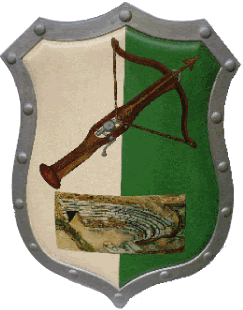 QUADRO 6 - (SESTIERE CAMPU)
- PIAZZA COLLETTA
QUADRO 6 - (SESTIERE CAMPU)
- PIAZZA COLLETTA
A Ventimiglia, saputa
dell’ingiusta carcerazione di Beatrice, ci fu un tentativo di ribellione
messa in atto da Giovanni Bordino e Badino Novello, contro il duca, che
però fu immediatamente repressa dal podestà Battista di Savignone.
Siccome non c’erano prove certe del tradimento di Beatrice, il Duca,
promettendo di aver salva la vita, convinse il musico, Michele Orombelli,
a confessare il falso. A questo punto per la donna non ci fu scampo e fu
condannata a morte. Il 13 Settembre 1418, nel castello di Binasco, fu
messa in atto la condanna; fu prima tagliata la testa alle damigelle che
raccontarono la menzogna, per evitare che inseguito potessero raccontare
la verità, poi al musico codardo, raggirato dal Duca, e infine, alla
povera e innocente Beatrice.
A Vintimille, lorsque on apprend l’injuste emprisonnement de Béatrice, Giovanni Bordino et Badino Novello tentent une révolte contre le duc de Milan, révolte que le podestat Baptiste de Savignone réprime subitement.
Comme les témoignages de la trahison de Béatrice ne sont pas clairs, le duc, avec la promesse d’avoir la vie sauve, parvient à convaincre le musicien Michel Orombelli à déclarer le faux. A ce point, pour la pauvre Béatrice il n’y a plus aucun espoir et elle est condamnée à mort. L’exécution a lieu le 13 septembre 1418, au Château de Binasco, après la décapitation des deux dames menteuses, pour éviter quelles puissent révéler la vérité et du lâche musicien, à qui les fausses promesses de Philippe n’ont pas sauvé la vie.
In Ventimiglia, Giovanni Bordino and Badino Novello, as they knew the unjust sentence against Beatrice, tried to raise an armed protest against the Duke: a protest that, the Podestà Battista di Savignone immediately repressed.
As he had no real evidences of the adultery, the Duke promised the musician, Michele Orombelli, he would spare his life and convinced him to commit perjury. The Duchess had no more escape and was sentenced to death. On September 13th, in the Castle of Binasco the executions took place; first the two ladies, who had lied, to avoid that, later on, they could tell the truth, then the cowardly musician, deceived by the Duke, and in the end the poor and innocent Beatrice were all beheaded.
Sobald man in Ventimiglia von der ungerechten Verhaftung Beatrices hörte, erhob sich unter der Führung von Giovanni Bordino und Badino Novello ein bewaffnetes Heer gegen den Herzog, der zu jener Zeit in hiesigen Gebieten nicht gern gesehen war.
Der Protest wurde jedoch unverzüglich vom Bürgermeister Battista di Savignone zurückgeschlagen.
Da es keine sicheren Beweise des Verrates von Beatrice gab, überzeugte der Herzog den Musiker Michele Orombelli eine Falschaussage zu machen.
Jetzt gab es für die Frau keine Rettung mehr und sie wurde zu Tode verurteilt. Am 13. September 1418 wurde das Urteil vollstreckt. Um zu verhindern, daß die Wahrheit ans Licht käme, wurden zunächst die zwei Edelfräulein, dann der feige, vom Herzog verratene Musiker und zuletzt Beatrice geköpft.